Where all of Wes Anderson’s movies have been filmed
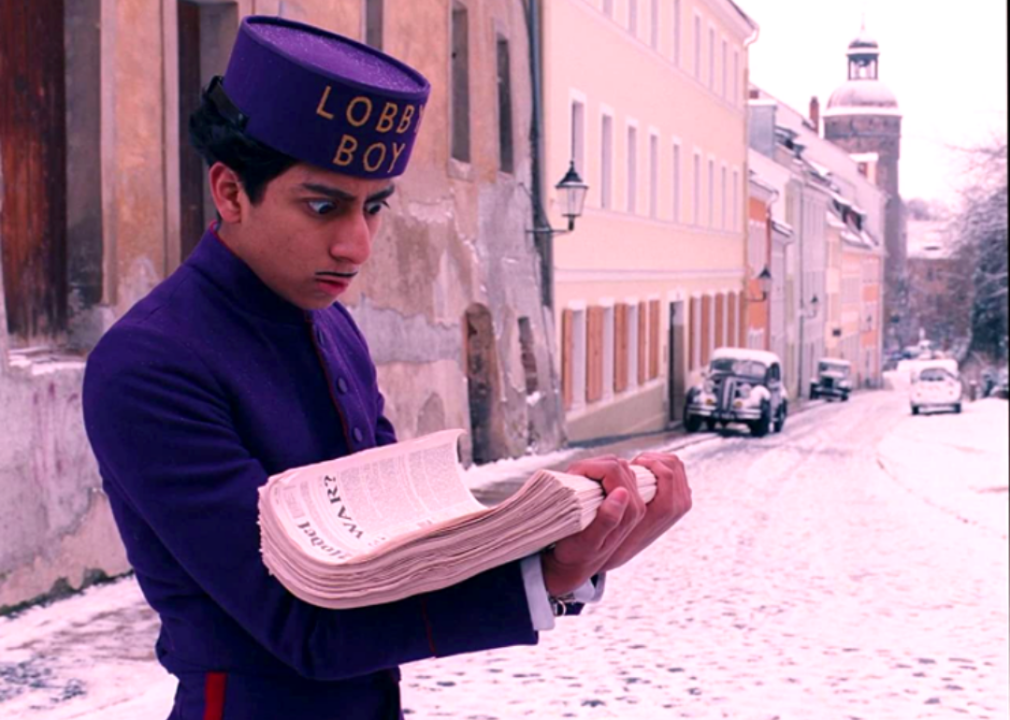
Fox Searchlight Pictures
Where all of Wes Anderson’s movies have been filmed
Instantly recognizable for their precisely composed shots, highly stylized (and detailed) set design, whimsical color palette, and recurring ensemble cast, Wes Anderson’s films merge playful, over-the-top absurdism with moments of emotional candor. Anderson is known for his fine attention to detail and sense of style, which has made his aesthetic a subject of analysis or criticism for some. And for others, his aesthetic is an art piece. Even his forays into stop-motion animation are imbued with his distinctive flair; every set piece and puppet is immaculately styled.
Many of Anderson’s films are massive undertakings, sometimes taking years to complete and involving frame-by-frame, rather than scene-by-scene, styling. In order to get a glimpse of what occurs behind the perfectly hung curtain of Anderson’s works, Giggster got granular with his filmography and dug into the major filming locations of each feature production. IMDb user ratings and Metascores are included for popular and critical context.
Read on to discover where and how some of Anderson’s films were made.
![]()
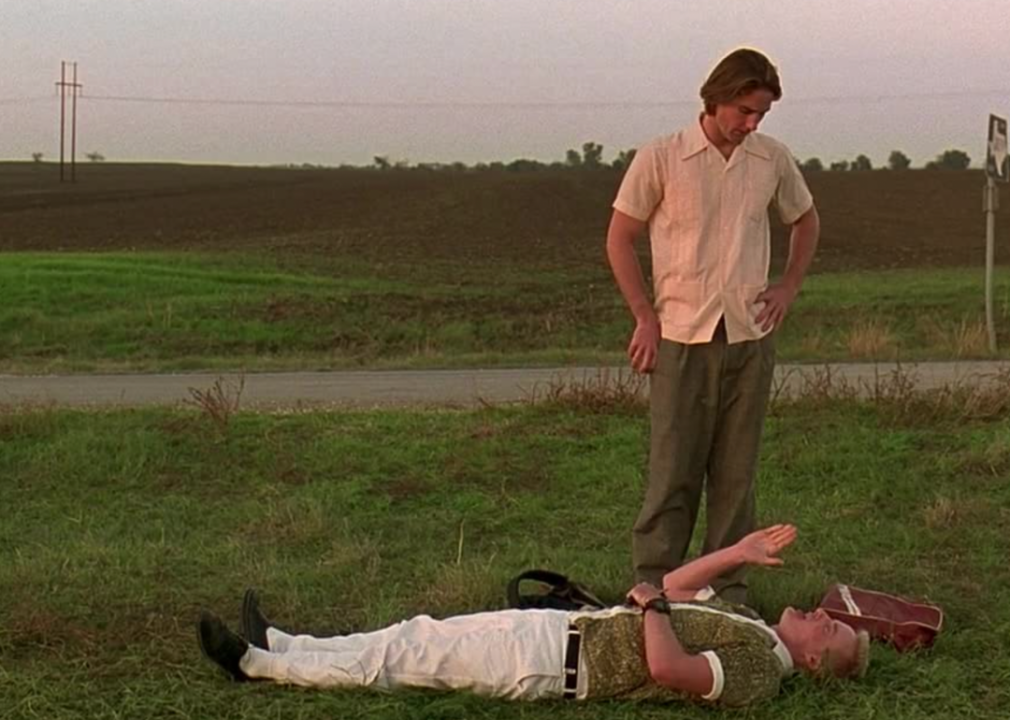
Columbia Pictures
Bottle Rocket (1996)
– IMDb user rating: 6.9
– Metascore: 66
– Runtime: 91 minutes
Wes Anderson’s first feature film was also his first collaboration with actors Owen and Luke Wilson. The director filmed “Bottle Rocket” primarily on location in Dallas, the same city where the Wilson brothers were raised. (Anderson also grew up in Texas.)
The high school featured in the film, St. Mark’s High School, was where Owen Wilson went to school before being expelled for cheating on a math test. The actor reportedly chose the school for the film as an act of playful revenge.
The film also features the last house Frank Lloyd Wright ever designed, the Gillin Residence, a sprawling building in Wright’s signature Usonian style. This Dallas house serves as the backdrop for where the eccentric robbery crew plot and practice their heists.
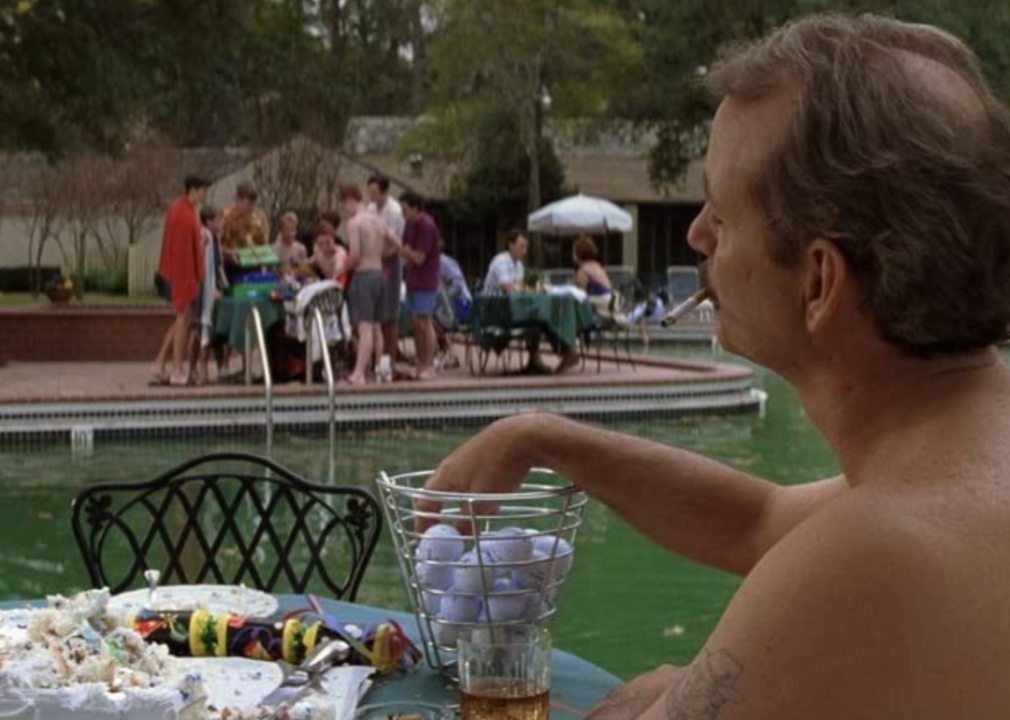
American Empirical Pictures
Rushmore (1998)
– IMDb user rating: 7.6
– Metascore: 86
– Runtime: 93 minutes
Another Texas-based film for Lone Star State-native Anderson, “Rushmore” is set at a Houston high school—Anderson’s alma mater, in fact. He reportedly looked at schools all over the United States, Canada, and even the United Kingdom for the perfect location. But it wasn’t until his mother sent him a photo of his old high school, St. John’s School, that Anderson decided to film the movie in his native Houston.
In order to avoid disrupting the school’s normal proceedings, Anderson and his crew shot only on weekends and during winter break. The production used local Houston kids as extras, including the then-undiscovered Alexis Bledel, who would go on to play Rory Gilmore on the TV show “Gilmore Girls” just three years later.
When searching for a house for teacher Rosemary Cross, Anderson again leaned on his Houston connections, choosing a house belonging to a former school classmate. This ended up being the set of the iconic pool party scene, when Bill Murray’s character jumps into the pool with a lit cigarette in his mouth and whiskey glass in hand, wearing Budweiser shorts.
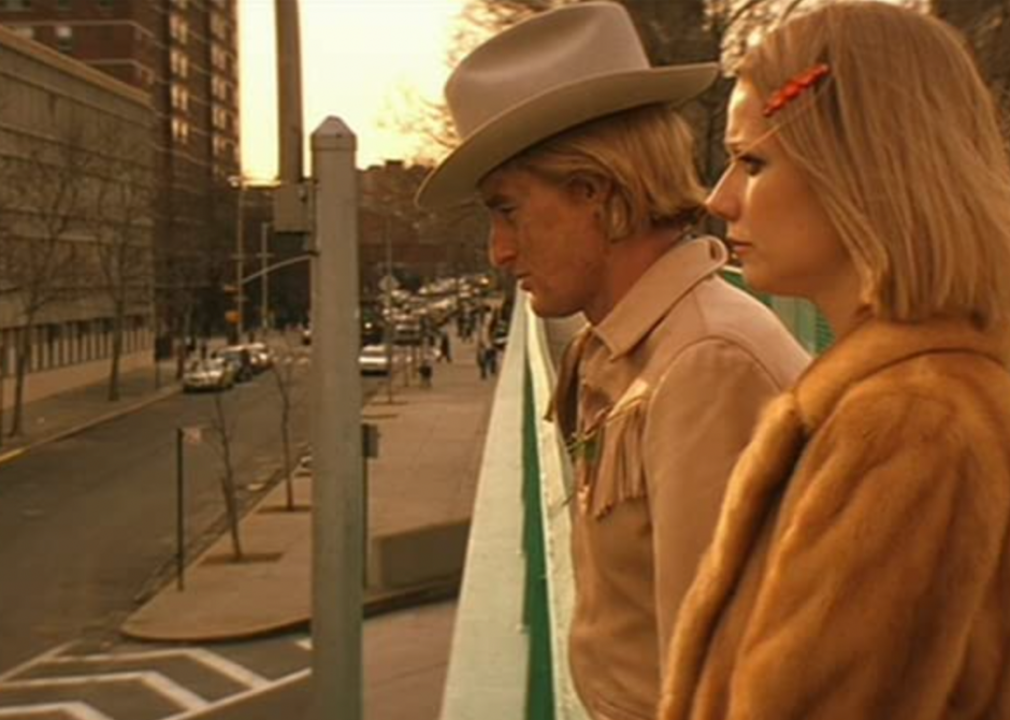
Touchstone Pictures
The Royal Tenenbaums (2001)
– IMDb user rating: 7.6
– Metascore: 76
– Runtime: 110 minutes
Set in a fictionalized version of New York City, this classic was mostly shot on location in and around the city. The iconic Tenenbaum house, located at the fictional 111 Archer Avenue, was shot at the Charles H. Tuttle Mansion in Manhattan’s Hamilton Heights. This historic 1890 mansion was owned by attorney Charles Tuttle, who lost to Franklin D. Roosevelt in his 1930 gubernatorial run.
In 2001, Anderson rented the home for six months in order to film both its interior and exterior, stalling planned renovations by its owners. Making the home unique to the Tenenbaums included picking up on eccentric, old New York references, like the zebra wallpaper decorating Margot’s bedroom, which was originally a fixture at the infamous Italian restaurant Gino’s.
Other notable New York locations in the film include the Tenenbaum’s summer house on Eagle’s Island, actually located on City Island in the Bronx. The house was previously used in the 1962 film “Long Day’s Journey Into Night,” starring Katharine Hepburn. For the invented 375th Street Y, Anderson’s team used the exterior of a building on the Upper East Side, while opting for an interior based somewhere in New Jersey.
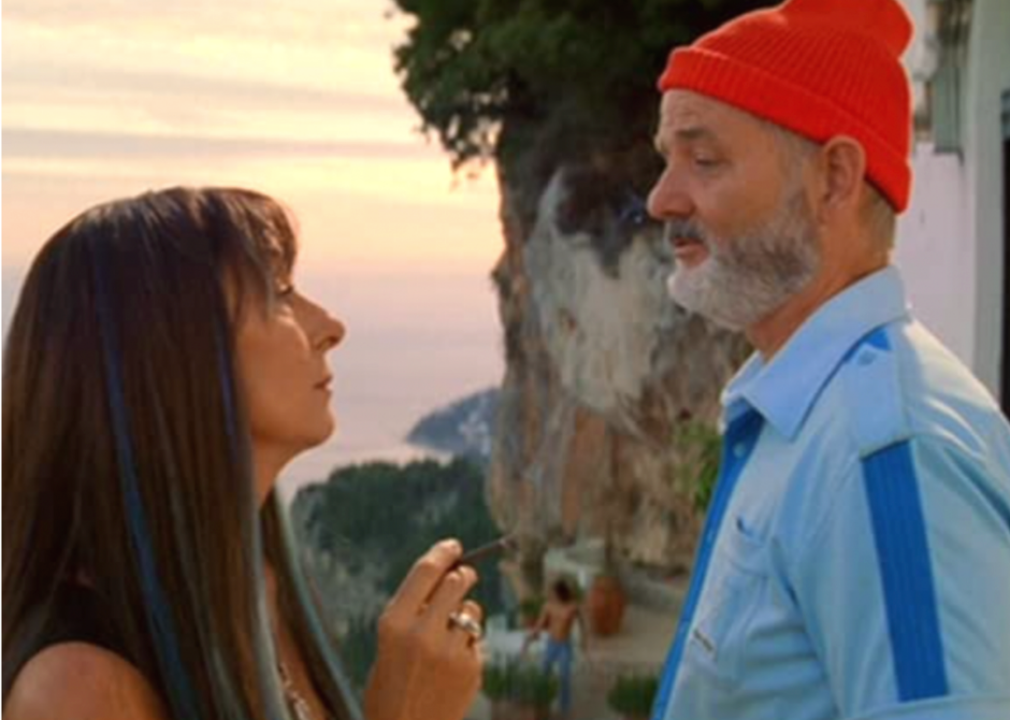
Touchstone Pictures
The Life Aquatic With Steve Zissou (2004)
– IMDb user rating: 7.3
– Metascore: 62
– Runtime: 119 minutes
“The Life Aquatic With Steve Zissou,” a Jacques Cousteau-meets-Moby Dick tale that takes place largely in a submarine, was mostly filmed at Cinecittà studios in Rome. Nicknamed “The Dream Factory” and “The Hollywood on the Tiber,” the studio was founded by Benito Mussolini in 1937 to revive Italian nationalist cinema. Over the years, Cinecittà was the location for “Ben-Hur” in 1959, “Cleopatra” in 1963, “La Dolce Vita” in 1960, “Gangs of New York” in 2002, and many more films.
In the studio, set designers erected a massive cross-section of the ship so each room could be looked into at once. Besides the 150-foot-long and 40-foot high set piece, the film also included a real boat. The boat’s name, the Belafonte, was formerly used as a naval ship before being sold to “The Life Aquatic” production team in South Africa. The film crew then towed the Belafonte to Italy for filming, where they shot at Ponza Island, the largest in a chain of islands off the western coast of Italy, as well as Torre Astura, a peninsula near Rome.
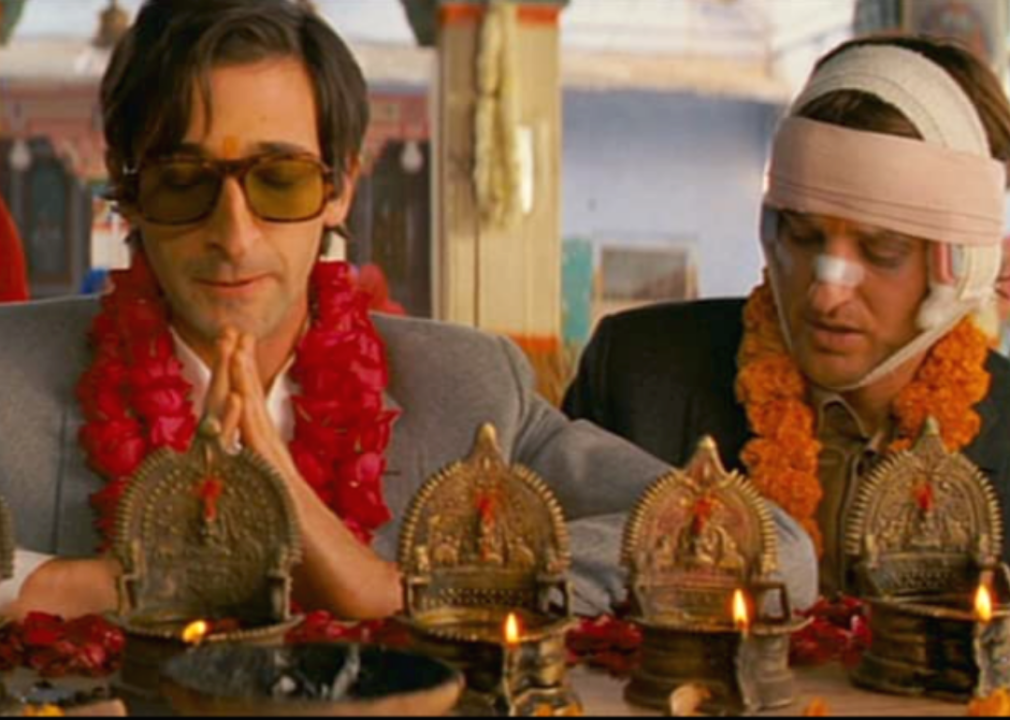
Fox Searchlight Pictures
The Darjeeling Limited (2007)
– IMDb user rating: 7.2
– Metascore: 67
– Runtime: 91 minutes
In “The Darjeeling Limited,” Anderson made somewhat of a departure from his hyper-stylized and controlled set design, particularly when filming scenes on the streets. The production was filmed in the Rajasthan cities of Jodhpur, Narlai, Osian, and Udaipur in India.
According to frequent Anderson collaborator Jason Schwartzman, Anderson wanted to lean more on documentarian techniques, like filming in streets that were not blocked off, and without trailers for hair and makeup crews. As a result, spontaneous moments like people or cars passing by were captured, adding to the authentic atmosphere of the locations. The train scenes, however, were more true-to-form Anderson style.
The production team acquired an actual Indian train and decorated it whimsically. It ran on schedule, though it didn’t pick up passengers, and even featured identical sets on either end of the train in order to have even lighting throughout the day.

Twentieth Century Fox
Fantastic Mr. Fox (2009)
– IMDb user rating: 7.9
– Metascore: 83
– Runtime: 87 minutes
Anderson began his foray into stop-motion animation with “Fantastic Mr. Fox,” with the film largely created at the London-based 3 Mills Studios. Tim Burton’s “The Corpse Bride,” as well as “Attack the Block,” “Never Let Me Go,” “RuPaul’s Drag Race,” “The Great,” and “Killing Eve,” among others, have all been made at the location.
Over the course of several years, the crew made roughly 535 puppets for Anderson’s film, including six different sizes of the same puppets for different types of shots. Two-inch puppets were used for wider, full shots, while more articulated 12-inch puppets were employed for closeups.
Instead of simulating the outdoors in a voice studio setting, Anderson opted to give the voice acting a natural, woodsy feel. The cast members went to a farm in Connecticut, where they recorded their parts in the woods, by a river, and yelling into horse trailers.
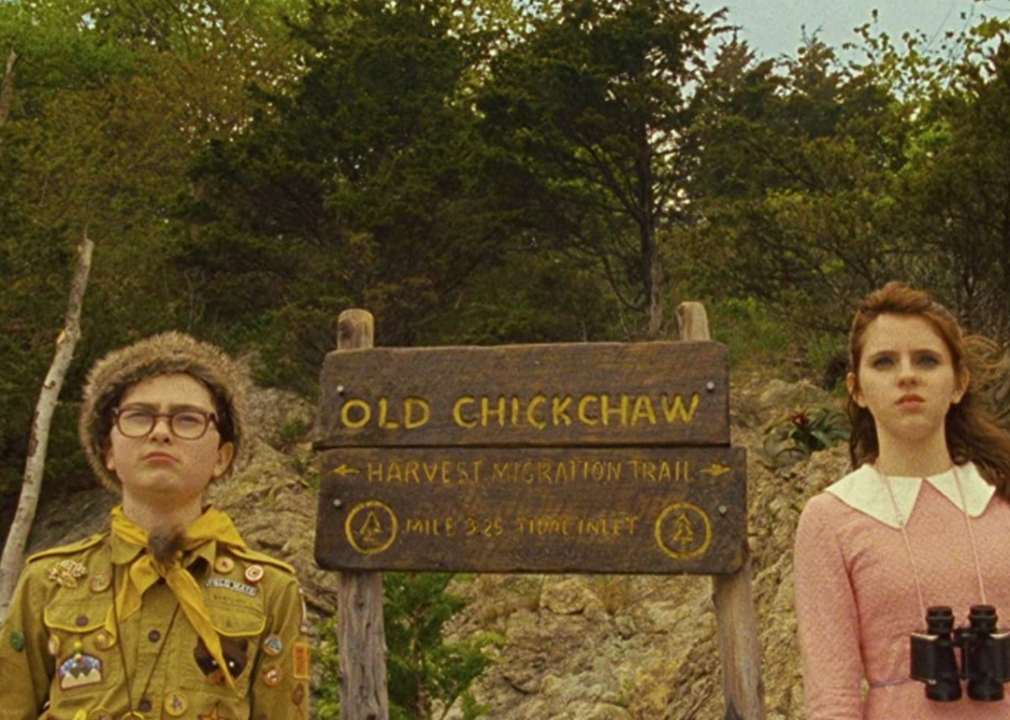
Indian Paintbrush
Moonrise Kingdom (2012)
– IMDb user rating: 7.8
– Metascore: 84
– Runtime: 94 minutes
The whimsy and detail of the world in “Moonrise Kingdom” was captured largely through its picturesque surroundings. Conanicut Island, the second largest island in Rhode Island’s Narragansett Bay, served as the location for the fictional New Penzance.
Conanicut Island Light, a real and now inactive lighthouse, fit for the stylized exterior of Suzy’s family home. The interior of the house came to life from an empty Linens ’n Things store in Middletown, Rhode Island. During set construction, the crew paid careful attention to creating a set consistent with Anderson’s look for the film while also making sure a family could realistically live in this home.
Modeled after a house in the Thousand Islands region of New York, the crew meticulously designed each prop and element of the house, including books, paintings, and the fantasy stories Suzy reads from, which were specially created by several different illustrators. For the design of Camp Ivanhoe, Anderson and his team took inspiration from a real nearby scout camp called Camp Yawgoog, where the Fort Lebanon scenes were filmed.
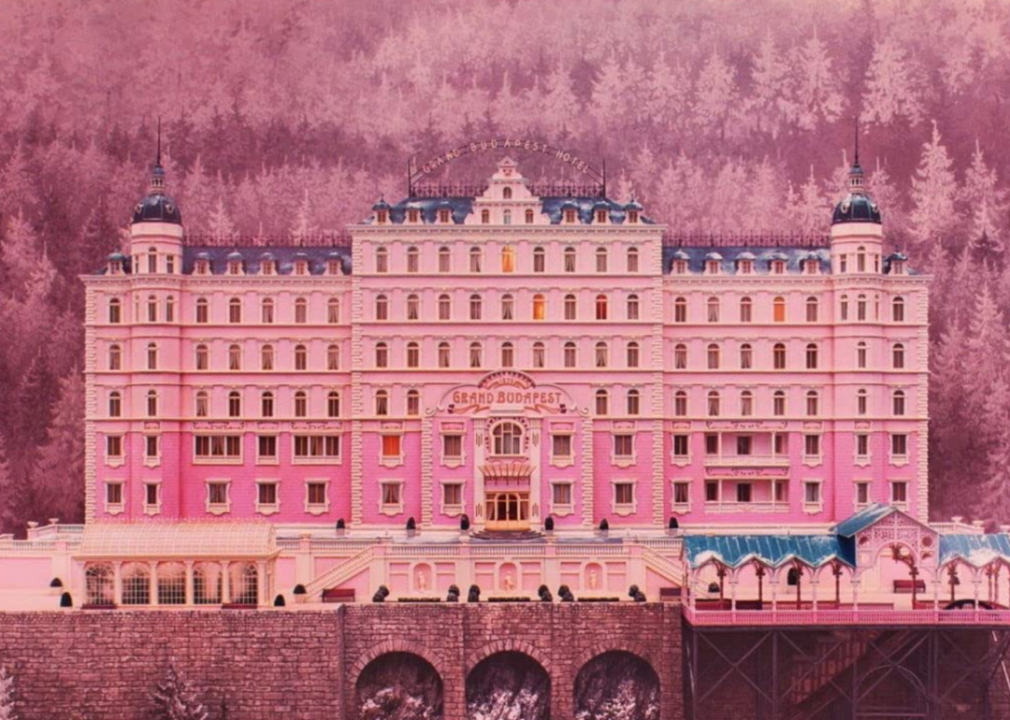
Fox Searchlight Pictures
The Grand Budapest Hotel (2014)
– IMDb user rating: 8.1
– Metascore: 88
– Runtime: 99 minutes
Anderson filmed much of “The Grand Budapest Hotel” in the eastern German town of Görlitz. Set designers transformed an abandoned 1913 department store in Görlitz, called the Görlitzer Warenhaus, into the hotel’s lobby. The upstairs of the department store served as the film’s production office.
The Grandhotel Pupp in Karlovy Vary, Czech Republic, and Hotel Adlon in Berlin served as inspiration for the exterior of the hotel, although the exterior was a model. The crew staged the hotel’s baths at an old Görlitz bathhouse, and many sets—including the hotel’s restaurant, the trophy room, and the hall of armor—were built in the town’s old city hall, the Stadthalle.
Mendl’s, the luxuriantly tiled bakery in the film, was shot inside a still-operating 19th-century dairy shop in Dresden, Germany, called Dresdner Molkerei Gebrüder Pfund. The outside of the bakery, like the lobby, was another Görlitz storefront. The town’s well-preserved and quintessentially European architecture has made it popular among other filmmakers as well. Quentin Tarentino’s “Inglourious Basterds,” “The Reader,” and “The Book Thief” all used Görlitz as a backdrop.
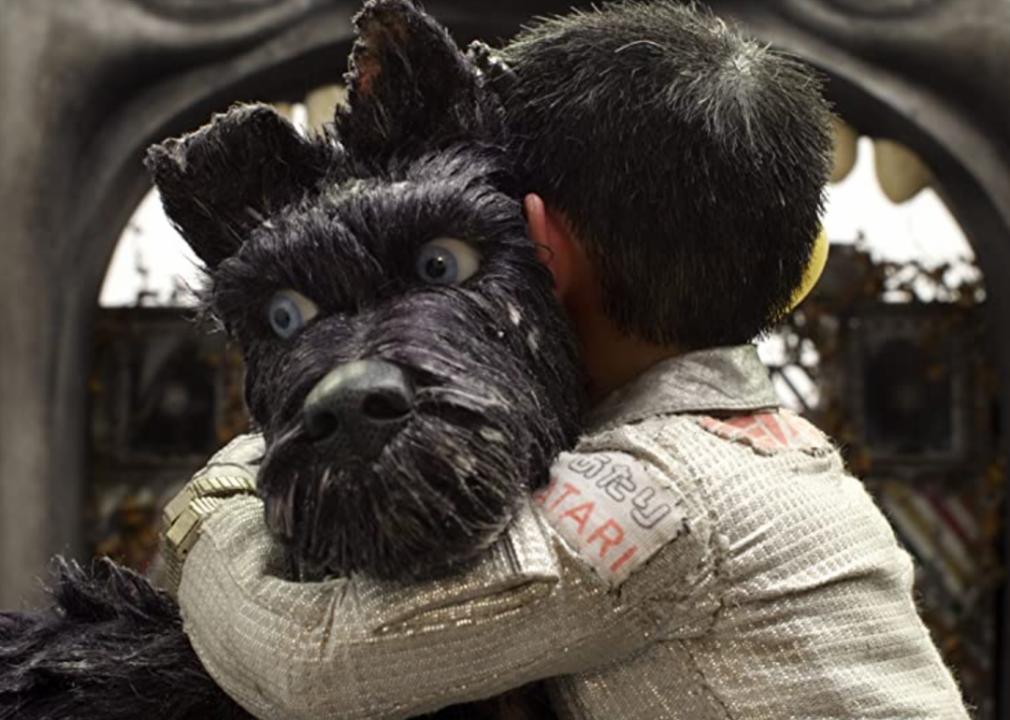
Indian Paintbrush
Isle of Dogs (2018)
– IMDb user rating: 7.8
– Metascore: 82
– Runtime: 101 minutes
Anderson’s second animated feature, “Isle of Dogs,” was perhaps even more ambitious than “Fantastic Mr. Fox” in terms of its scale: It had 1,000 handmade puppets and 240 carefully constructed sets. Anderson’s team returned to 3 Mills Studios in London to make the film and comprised 670 animators, artists, and editors.
The production took two years, in part because of the incredible detail that went into every shot and puppet. One character, voiced by Greta Gerwig, had 321 freckles painstakingly hand-painted onto each of her puppets. Specificity played a huge role in designing the sets, inspired by ’60s Japanese cinema blended with 19th-century Edo-period woodblock prints. Anderson and his crew created a look that blended urban, technological, and classical styles. This included not only the overall look of the sets, but the design of tiny individual components, like milk cartons, medicine bottles, and books. Some scenes, like a particularly detailed one in a sushi bar, took six months to shoot.
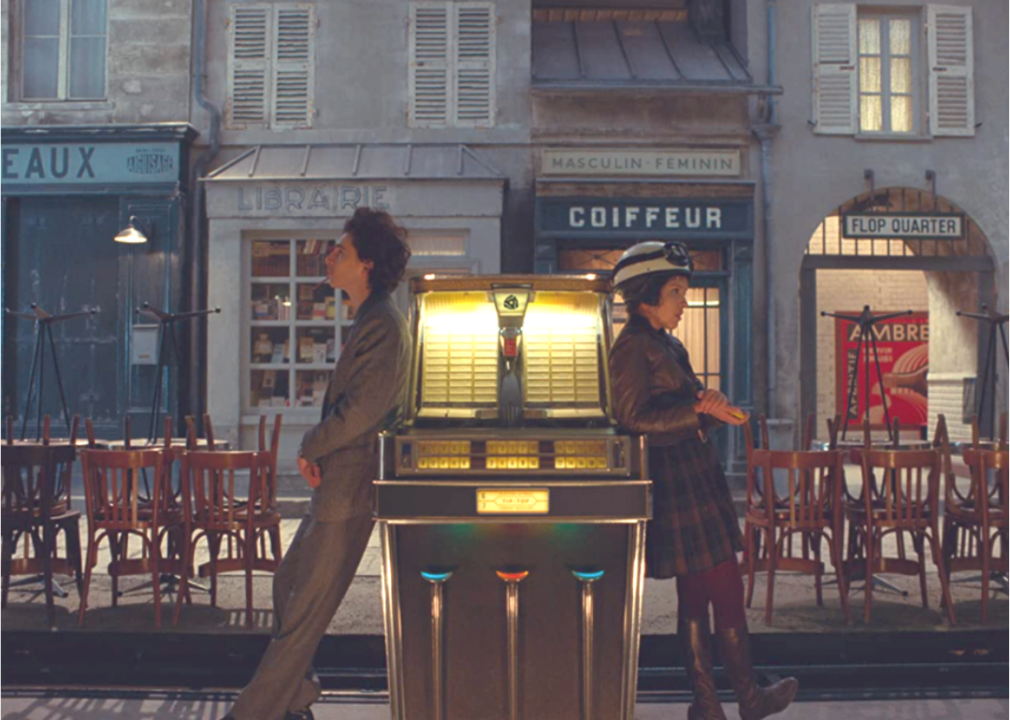
American Empirical Pictures
The French Dispatch (2021)
– IMDb user rating: 7.2
– Metascore: 74
– Runtime: 107 minutes
The fictional town where “The French Dispatch” takes place, Ennui-sur-Blasé, was filmed in the French city of Angoulême, about two hours from Bordeaux. In an interview, Anderson explained that he chose Angoulême because it could be mistaken for a Parisian neighborhood, like Belleville or Montmartre. Shooting there took six months, and the production employed 900 locals to be extras.
In the final vignette of the film, which features the story of a famous chef and a harrowing kidnapping and rescue sequence, the animated sequence serves as a tribute to the talents of Angoulême’s renowned comic book scene, created completely by local illustrators. For the second section of the film—a profile of the fictional incarcerated artist, Moses Rosenthaler—the team transformed a factory just outside Angoulême into the prison where Rosenthaler creates his massive frescos. Anderson commissioned Sandro Kopp, an artist (and partner of cast member Tilda Swinton), to create the entire works of Moses Rosenthaler over the course of only a few months. Kopp worked closely with Anderson in Angoulême to complete the project.
This story originally appeared on Giggster
and was produced and distributed in partnership with Stacker Studio.



